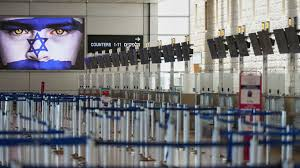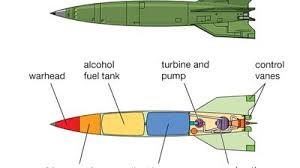Global Air Travel Thrown into Chaos as Middle East Tensions Boil Over, Forcing Widespread Flight Cancellations

✈️ Middle East Tensions Paralyze Global Air Travel After Missile Strike on Qatar
📍Introduction
A sudden escalation in Middle East hostilities has reverberated across the global aviation industry, with several Gulf nations temporarily shuttering their airspace following a missile strike near Doha. Beginning late Monday, June 23, 2025, the mass closure led to cascading flight cancellations, widespread rerouting, and thousands of stranded passengers. Though skies began reopening on Tuesday, the disruption's ripple effects are expected to persist for days.
🧨 Background: The Trigger and Escalation
At the heart of the crisis lies a missile assault by Iran targeting Al Udeid Air Base in Qatar—home to U.S. and coalition forces. The attack, a retaliatory move in response to earlier military operations, instantly escalated tensions in the Gulf. Within hours, Qatar, followed by the UAE, Kuwait, Bahrain, and Iraq, closed their airspace to commercial aviation.
This drastic measure disrupted one of the most vital east-west aviation corridors globally—where thousands of aircraft connect Europe, North America, Asia, and Africa daily.
✈️ Impact on Global Air Travel
The closure triggered immediate redirection of dozens of flights bound for Doha, Dubai, and Abu Dhabi. Some diverted to Saudi Arabia, India, Oman, or North Africa, while others returned to origin airports. Long-haul operations, particularly those by Qatar Airways, Emirates, and Etihad Airways, experienced extensive cancellations.
According to FlightAware, over 819 flights were cancelled globally by early Tuesday. Dubai International Airport reported 89 cancellations—a stark illustration of the region’s centrality to world aviation.
Airline Impact
| Qatar Airways | Full operational suspension, resuming cautiously
| Emirates & Etihad | Dozens of cancellations, rerouting in progress
| International Carriers | British Airways, Lufthansa, Singapore Airlines, Air India, and others impacted
🙍 Passengers Stranded, Airlines Respond
The abruptness of the airspace closure left thousands of passengers in limbo. Airports became makeshift shelters. Qatar Airways activated contingency teams, offering accommodation and rerouting support. Emirates deployed additional staff across its terminals. Despite these efforts, long queues, limited information, and escalating traveler frustration dominated regional hubs.
Passengers described experiences ranging from abandoned connections in secondary airports to marooned families at international transit points.
🔁 Recovery: Reopening Skies, Clearing Backlogs
By Tuesday morning, June 24, the Gulf nations began lifting restrictions. Qatar Airways resumed select services, prioritizing transit passengers and delayed departures. However, the full normalization of schedules may take several days.
Analysts caution that while the reopening is welcome, the fluid security situation means carriers must remain agile.
🔍 Broader Implications and Industry Lessons
This event reaffirms how exposed the aviation sector is to fast-moving geopolitical shocks. Key takeaways for the industry:
- Risk Modeling Gaps: Airlines may need to enhance scenario planning for military conflicts involving regional hubs.
- Contingency Routing: Relying heavily on Gulf hubs presents a systemic vulnerability for global carriers.
- Crisis Coordination: The speed of communication between civil and military air traffic control was a critical factor in preventing in-air collisions and mid-route chaos.
This incident may accelerate conversations around redundancy in routing, distributed hub strategies, and airspace risk profiling in conflict-prone regions.
✅ Conclusion
The missile strike and ensuing airspace shutdown across the Gulf have delivered a jarring reminder: global mobility can be halted in an instant. Though operations are gradually resuming, airlines face days of operational backlog and reputational stress. For passengers, the journey back to normalcy will require patience and preparedness. And for the aviation industry, this marks a pivotal moment to re-evaluate security thresholds in a world where diplomacy and danger increasingly overlap at 30,000 feet.
League Manager Editorial Team







Leave a Comment